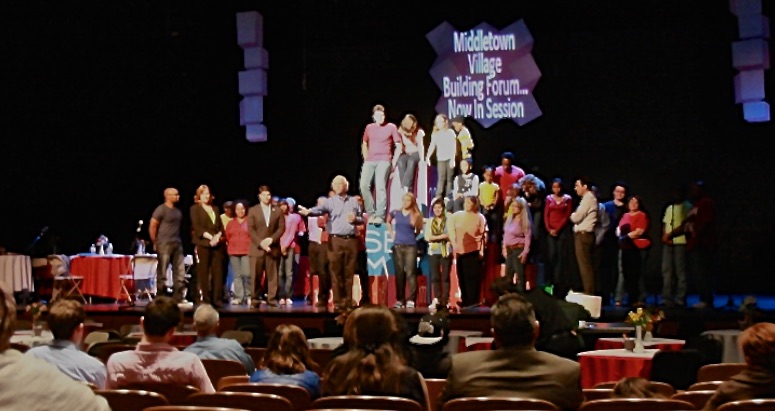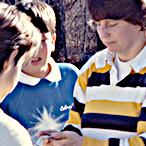 It takes a collaborating community to provide a Rite of Passage Experience© initiative to its youth. Building community partnerships is the first step toward successfully installing a ROPE® initiative in a community.
It takes a collaborating community to provide a Rite of Passage Experience© initiative to its youth. Building community partnerships is the first step toward successfully installing a ROPE® initiative in a community.
Any school or community group can take the lead in installing* ROPE®. What is essential is the formation of a collaborative comprised of diverse members of the community. Some communities provide rites of passage activities like ROPE® through the school system, some through youth services or through a community organization like the YMCA. Whatever the venue in which initiation and rite of passage experiences occur there needs to be collaboration between the significant systems, institutions and parents. The 20 elements in the architectural structure for youth & community development through rites of passage offer principles to inform and guide the development of designs. Or, in conjunction with The Rite Of Passage Experience© ROPE® Guide for Promoting Youth & Community Maturation & Health support the development and installation of their rites of passage experience.
Although the ROPE® process has prescribed elements that could be considered a program, the programmatic elements work together, not as a prescription but as a structure to foster a collaborative evolutionary process within a community. Thus, the strategy’s utility is not in its programming but in its ability to mobilize a community, within a common language and shared emotional experience, to create and sustain a community focused initiative. Programmatic strategies and community collaboration and coordination help promote important developmental assets in children and youth.
Consultation and training is in the form of a “partnership”. We tailor our partnership relationship, consultation and training, to each particular situation, interests and needs. Different options are designed to meet the unique situation of groups, schools and communities. The first part is central to building a collective understanding, through shared language, of the guiding principles, process and practice of community-oriented rites of passage. One model offers a three-part consultation and training design that may occur over a period of several years. Each part uses design strategies related to the 20 elements in the architectural structure for youth & community development through rites of passage.
Our partnership - consultation and training is designed to provide materials, information and experiences organized to introduce and deepen one’s understanding of youth & community development through rites of passage. How they actual occur adapts to the unique characteristics, ideas and needs of each situation. Consultation for Parts I and Part II are typically conducted during the first year of the installation*. However, it is not unusual for a community to spend a year or more developing Part I to establish a solid foundation of partnerships within the community. Exploration and co-learning about rites of passage is a community engagement process enacted within schools, parent groups, civic, cultural and faith organization, government and others. Laying a strong foundation of understanding and collaboration is essential to a successful initiative that is adaptable and will be sustainable over years.
Part III consultation and training typically takes place at the end of the first year of Phase I implementation.
Purpose: To build understanding throughout the community of the health promotion benefits and importance of rites of passage for youth and community development in our society. Begin building community partnerships for co-learning and co-designing their rites of passage experience.
Steps:
This orientation includes an exploration into the relationship between rites of passage and a sense of community and examines the practical aspects of implementing the philosophy of, “It takes a whole village to raise a child.” It outlines a community process for creating, implementing and sustaining a community-oriented rite of passage like the Rite of Passage Experience© ROPE® initiative and illustrates how this promotes developmental assets and social-emotional learning in children and youth as well as other benefits.
Purpose: To work with a Core Group of 12 - 15 individuals from the community partnerships to build skills needed for implementation of the various program activities of a community-oriented rite of passage that may include parts or the entire Rite Of Passage Experience© ROPE® initiative. Convene a “Learning Community” for the Core Group to refine and tailor their rites of passage experience to reflect the community's cultural uniqueness and resources.
Steps:
1. Train and learning together with the Core Group (Designed developed and may include five days).
Purpose: To assist the Core Group and community partnerships develop and implement the follow-up phases in the community-oriented rite of passage. It may use the Rites Of Passage Experience® ROPE® design as an example for activities oriented with students in Middle School (Phase II) and High School (Phase III) and their parents.
Steps:
1. Support the community coordinating council’s series of continued learning communities to tailor the follow-up activities for Phase II and Phase III, or other designs that may have emerged.
Consultation and training are tailored to each community's particular situation and needs. The three-part consultation and training is designed to occur over a period of several years. Consultations for Parts I and II are typically conducted during the first year of implementation. However, it is not unusual for a community to spend a year or more in Phase I, establishing partnerships and a solid foundation within the community. Part III consultation and training typically takes place at the end of the first year of Phase I implementation.
For additional information, click HERE to download the ROPE® Planning Guide.

*We use the terms “install” and “installation” to define the implementation process of the ROPE® initiative. This is intentional and aligns this process with the creation and placement of a work of art in a community. We believe that engaging in a youth & community development through rites of passage is as much about art as it is science, perhaps more so. It is the integration of the wisdom of our ancestors and contemporary western science.